Source: C Labs Crypto Observer
Recently, several traditional big shots have entered the crypto circle, not to invest in crypto assets, but for a simple reason: to receive payments using USDC.
In fact, every time a new technology revolution occurs, large-scale application is like a gray rhino, completing the popularization of application unconsciously.
Speaking of which, it is really amazing that modern society still uses a system as terrible as SWIFT for cross-border US dollar settlement:
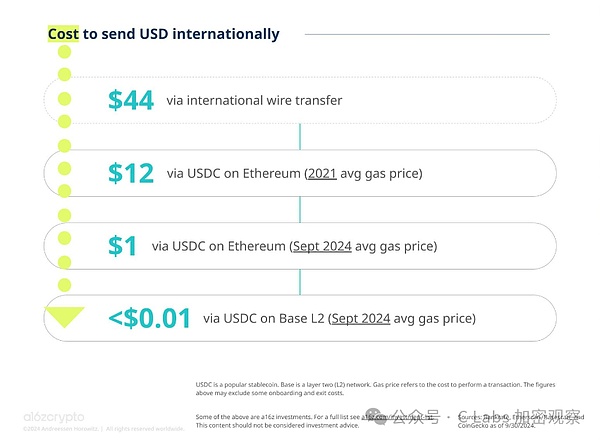
Now the average remittance cost is still tens of US dollars, while the transfer cost of stablecoins has been steadily declining in recent years due to the development of on-chain performance.
In fact, the transfer volume of stablecoins this year has not increased much compared to 2021, but this volume has remained stable even during the bear market:
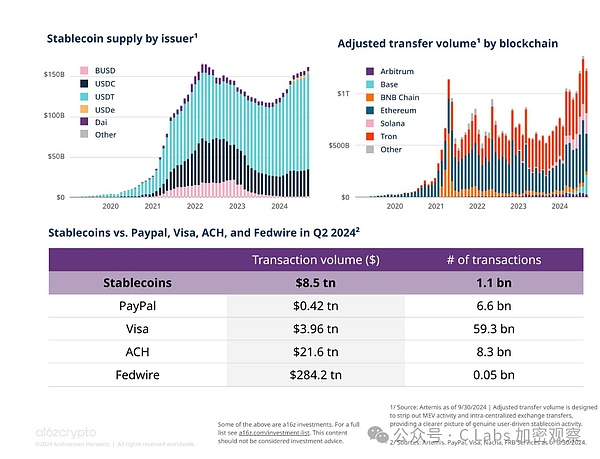
The transfer volume of stablecoins in the second quarter of this year was $85 trillion, more than double the $39.6 trillion of Visa during the same period.
The transfer volume of stablecoins is second only to the Federal Reserve's Fedwire and the US banking system's ACH clearing system.
More importantly, the transfer volume of stablecoins has remained stable even during the bear market, with the transfer volume in the 2023 deep bear market being about half of the current bull market.
In the current development of RWA and the entire crypto circle, stablecoins should be the most widely recognized use case (without a doubt)

In the past, these stablecoins did not have any stable income channels.
But now it's different, US bond interest rates have entered a downward cycle, and the spot yields on exchanges have been around 5% at the lowest this year, and even exceeded 30% at the highest!
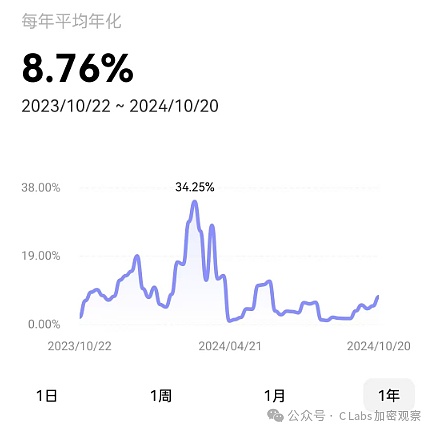
The spot interest income on exchanges mainly comes from user leverage or the funding required for contracts, which is essentially the same as the safety of stock allocations.
When other RWA products still have compliance thresholds, the allocation demand of exchanges can also provide a stable income scenario for stablecoins.
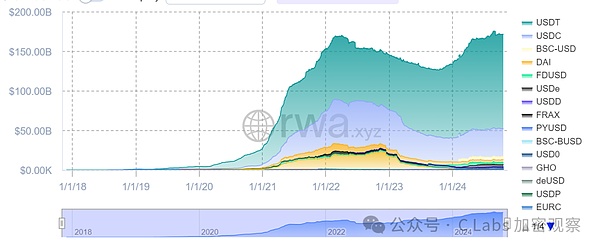
From the perspective of stablecoin issuers, Tether has withstood the test, providing about 70% of stablecoins.
Circle has the second largest market share, providing about 20% of stablecoins.
All other stablecoins combined have a market share of about 10%.
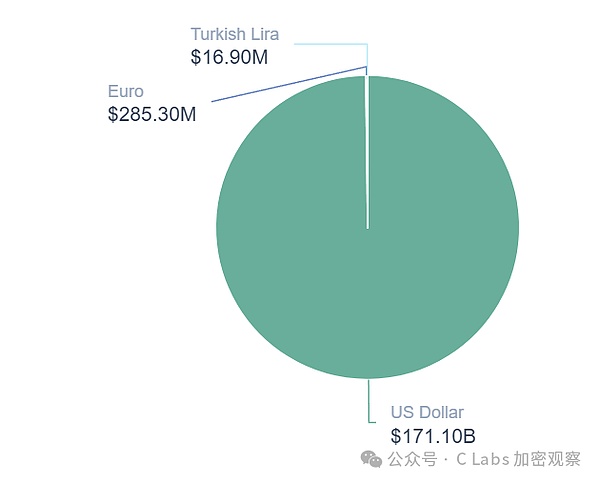
In the field of stablecoins, more than 99% are US dollar stablecoins, so stablecoins can be seen as not a threat to the US dollar, but rather further promote the hegemonic settlement position of the US dollar in the crypto market.
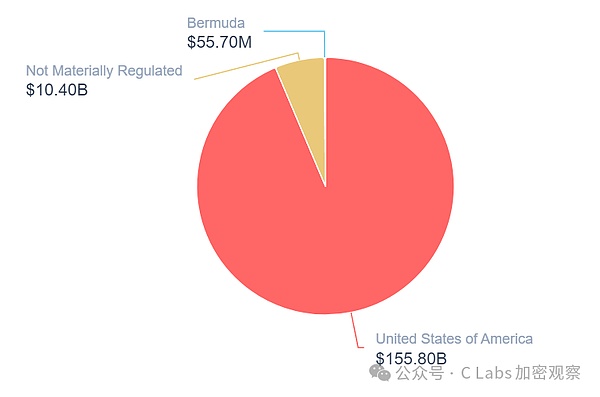
Moreover, most stablecoins are issued within the United States.
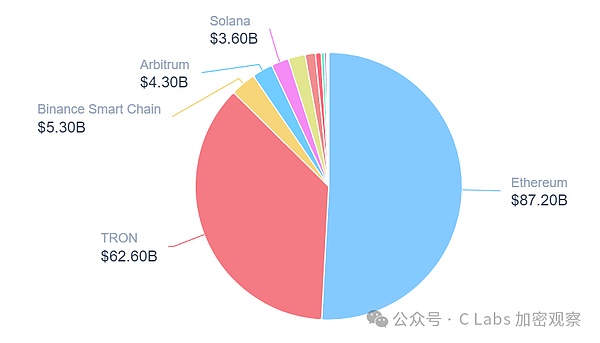
ETH still has the advantage of its current ecological position, accounting for more than half of the stablecoin market;
TRON, which was the market leader a few years ago, has now fallen to second place.
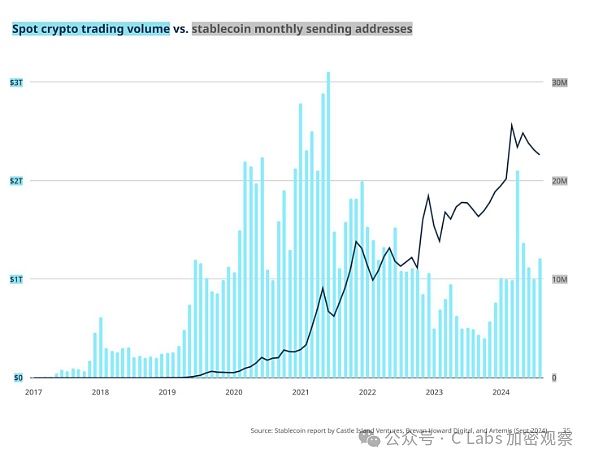
Although the transfer volume of stablecoins this year is about the same as the peak in 2021, the number of active addresses on the chain has still achieved steady growth.
From this perspective, the changes in cross-border finance may start very soon~






